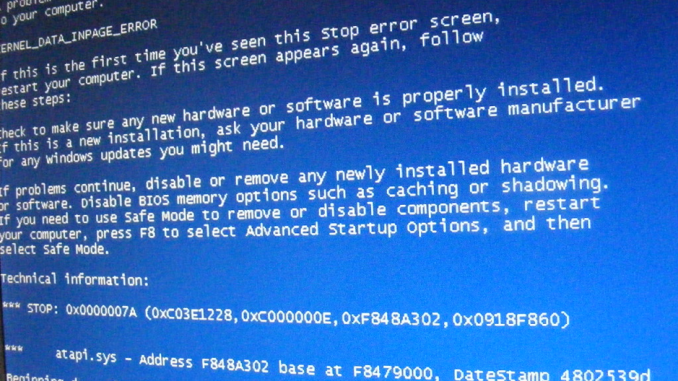
- Do an analytical review of a film or television program about the Internet, from the list included in your unit outline (p. 6). In your review, be sure to do more than simply describe the film and/or TV show. Place it in the context of debates about the Internet, its history, power relations, and its future.
Introduction:
The IT department is an integral aspect to any company that regularly use computers or the internet. Having individuals with knowledge and troubleshooting abilities greatly help the day to day operations. This essay will be analytically reviewing some select moments from the television program, ‘The It Crowd’ (Linehan, 2006), which centres on the IT department of Reynholm Industries. This program will be placed in relation to the history of the internet, and the stereotypes and tropes that are commonly connected to it. It will be reviewed to assess how its satirical portrayal of the IT department has reinforced negative stereotypes of internet culture users. The program’s interaction with the social media platform ‘Friendface’ will also be analysed, as well as a look at the future of the internet, by comparing the main themes of the 2006 program with what internet culture has now become, and will potentially grow to be.
Overview of ‘The IT Crowd’:
Firstly, what is ‘The IT Crowd’? It is a British television program that ran from 2006-2013. It revolves around three members of an IT department: Roy, Moss, and Jen. Their office space is in an unkept basement of the company building, where most of the chaos and events occur. Jen is the manager of tech savvy Roy and Moss, though she knows absolutely nothing about the internet, computers, or anything IT related. For a more thorough description of the television show, a link is available here.
A brief history of the Internet:
Knowing a bit about the history of the internet helps to understand the satire that is at play in ‘The IT crowd’. Barry M. Leiner and colleagues discuss that the internet was “based on the idea that there would be multiple independent networks” that eventually all connected to one another, being “open-architecture networking” (1997, p.5). This did happen, as we now have laptops, phones, radios, routers, Wi-Fi systems etc. that all contain linkable internet capabilities. Leiner et al. also mention that the internet “is as much a collection of communities as a collection of technologies” (1997, p.13). The creation of the multiple faucets of the internet brought multiple communities together through technology.
“The internet…needs specific knowledge to truly understand, and to maintain”
The aspect of this I want to investigate further, is that the communities were still a select few that had knowledge on internet systems (Leiner et al., 1997, p.13). The internet is considered “a creature of the computer”, which needs specific knowledge to truly understand, and to maintain (Leiner et al., 1997, p.17). Manuel Castells also argues that “the culture of the internet is rooted in the scholarly tradition of the shared pursuit of science” (2002, p.40). This then relates to my interest in ‘The IT Crowd’. These individuals are framed as having very specific knowledge, and are able to understand complex algorithms, codes, and the inner workings of computer hardware. It is then worth closely reviewing the internet cultures that are represented in the program, and the stereotypes and tropes that go with them.
Men in IT:
I am interested in the differing portrayals of men and women within the internet space, present within ‘The IT Crowd’. A study was conducted by Ángel García-Crespo and colleagues on ‘The IT Crowd’’s perpetuation of IT stereotypes (2008). They found the image that constantly emerged was “nerdy, intelligent…lacks social graces…boring, solitary, unethical and poorly dressed” (García-Crespo, 2008, p.24). This image matches the portrayal of men in ‘The IT Crowd’ scarily well, which is what the study concluded (García-Crespo, 2006, p.27). This stereotype that ‘The IT Crowd’ projects is notable as it must have been developed from somewhere.
In an interview with Fred Turner, Alberto Lusoli commented that the nerd archetype developed at the “onset of the digital revolution”, which he still saw at the time of the interview, in 2020 (p.240). Furthermore, he commented that “production in tech companies is still very structured and fragmented” (Lusoli, 2020, p.240), which is very prevalent in ‘The IT Crowd’. The IT department is a crowded few rooms on the dirty basement level of the company sky scraper, as seen in the below video. This is clear commentary on the nerd archetype that Lusoli mentions, and reinforces the fragmentation that occurs in real life (2020, p.240). While it is negative, the portrayal of men in IT, seen in ‘The IT Crowd’, is reflective of actual internet cultures that are currently occurring.
Women in IT:
Similarly, the program also portrays women in IT negatively, but through different means. The below video shows season 3 episode 4, where Jen is tricked into believing the entirety of the Internet is held on a single black box, with a little red blinking light. She believes it completely, and her questions are met with ridiculous answers, that she also believes. This is projecting a stereotype of a stupid woman, not knowing anything about the internet or IT. It reinforces stupidity and ignorance within women, and places women as completely separate from the digital sphere. There is an article on Jen’s character deterring women to get into tech, which reinforces this review of the program. There is also a forum on that article, that continues the discussion of Jen’s negative impact as a character in IT. The reason this character has been developed as so ignorant, is again reflective of real life. As Lusoli comments, from the 1960’s to now, “the communes…tended to be very male dominated” (2020, p.237). In García-Crespo and colleagues’ study, they also found that “the level of empathy was lower for women”. Thus, while this character exists in a satirical world, the foundation of her is based in the internet culture of the real world.
Social media obsession:
The last aspect of ‘The IT Crowd’ that I will be trying to better understand is their take on social media. ‘Friendface’ is the 5th episode of the 3rd season, and explores the obsessive nature of social media, by parodying Facebook. As a platform, Facebook algorithmically lures users in with curated feeds that will ‘appeal’ to each individual, as commented on by Tainer Bucher, (2017, p.34). The below video of Jen staying up late on Friendface satirically exemplifies the inability to ‘log off’, or to miss any amount of engagement with a social media platform, (Bucher, 2017, p.39). It demonstrates online platforms at play, and the obsessive culture that surrounds being connected online.
To further this analysis of Friendface, the below video of ‘The IT Crowd’ shows the main characters in one room together, with Jen unable to finish a sentence as notifications from her computer distract her every time. Ashwini Nadkarni and Stefan G. Hofmann have commented on humans being “highly dependent on the social support of others” (2012, p.245), which heavily contributes to the widespread use of social media platforms like Facebook. This is what is seen in ‘The IT Crowd’, with Jen’s persistent attention on her computer. This is then furthered by the group opening an online chat window to converse while in the same room, with Jen commenting “I love this. I feel so social”. The irony is obvious, as they are simultaneously so digitally connected and so disconnected to reality. Nadkarni and Hofmann argue that social media platforms do provide a sense of social connection for most users, but there are dramatically varying degrees of disconnection in the real world for those same people (2012, p.246). This is another aspect of internet culture that ‘The IT Crowd’ satirises to reflect fairly accurate behaviours in our society.
Conclusion and the future:
From this analytical review of ‘The IT Crowd’, it is clear that many elements of the show are deeply rooted in reality. The negative stereotypes, sexist ideals and obsessive behaviours have all been supported as accurate to varying degrees within internet cultures and communities in the online space. The future of internet culture has seen improvement from this 2006 show, with regards to women being able to somewhat increase their space in the online sphere. The negative connotation of ‘geek’ and ‘nerd’ has also transformed, as a multitude of people from different disciplines now elect to identify as such, as seen in Jason Tocci’s paper on changing identities in the digital age (2009, p.2). In regards to social media platforms, a negotiation of identity has developed more and more as so many platforms are available to engage with (Duffy, & Chan, 2019, p.120). ‘The IT Crowd’ is a humorous piece of satire, that reveals multiple aspects of internet culture needing to change. Reviewing this program has revealed just how far the online sphere has come since 2006, with larger accessibility, and more complex ways to negotiate an online connection and digital identity.
REFERENCE LIST
Bucher, T. (2017). The algorithmic imaginary: exploring the ordinary affects of Facebook algorithms. Information, Communication & Society, 20(1), 30-44. doi:10.1080/1369118X.2016.1154086
Castells, M. (2001). The Culture of the Internet. In Internet Galaxy: Reflections on the Internet, Business and Society. 36-63. Oxford University Press. doi:10.1093/acprof:oso/9780199255771.003.0003
Duffy, B. E., & Chan, N. K. (2019). “You never really know who’s looking”: Imagined surveillance across social media platforms. New Media & Society, 21(1), 119–138. https://doi.org/10.1177/1461444818791318
García-Crespo, Á., Colomo-Palacios, R., Gómez-Berbís, J. M., & Tovar-Caro, E. (2008). The IT Crowd: Are We Stereotypes? IT Professional, 10(6), 24–27. https://doi.org/10.1109/MITP.2008.134
Leiner, B. M., Cerf, V. G., Clark, D. D., Kahn, R. E, Kleinrock, L, Lynch, D. C., Postel, J, Roberts L. G., & Wolff, S. (1997). Brief History of the Internet. Internet Society. 1-19. Accessed from: https://www-orig.internetsociety.org/wp-content/uploads/2017/09/ISOC-History-of-the-Internet_1997.pdf
Lineham, G. (Writer). (2006-2013). The IT Crowd [Television broadcast]. London, England: Channel 4.
Lusoli, A., & Turner, F. (2021). “It’s an Ongoing Bromance”: Counterculture and Cyberculture in Silicon Valley—An Interview with Fred Turner. Journal of Management Inquiry, 30(2), 235–242. https://doi.org/10.1177/1056492620941075
Nadkarni, A., & Hofmann, S. G. (2012). Why do people use Facebook? Personality and Individual Differences, 52(3), 243–249. https://doi.org/10.1016/j.paid.2011.11.007
Tocci, J. (2009). Introduction. In Geek Cultures: Media and Identity in the Digital Age. (pp. 1-15). Penn Libraries. 953. Accessed from: https://repository.upenn.edu/edissertations/953
Stereotypes, sexism and social media in the IT department © 2021 by Alecca Hatzikalimnios is licensed under CC BY-NC-ND 4.0



